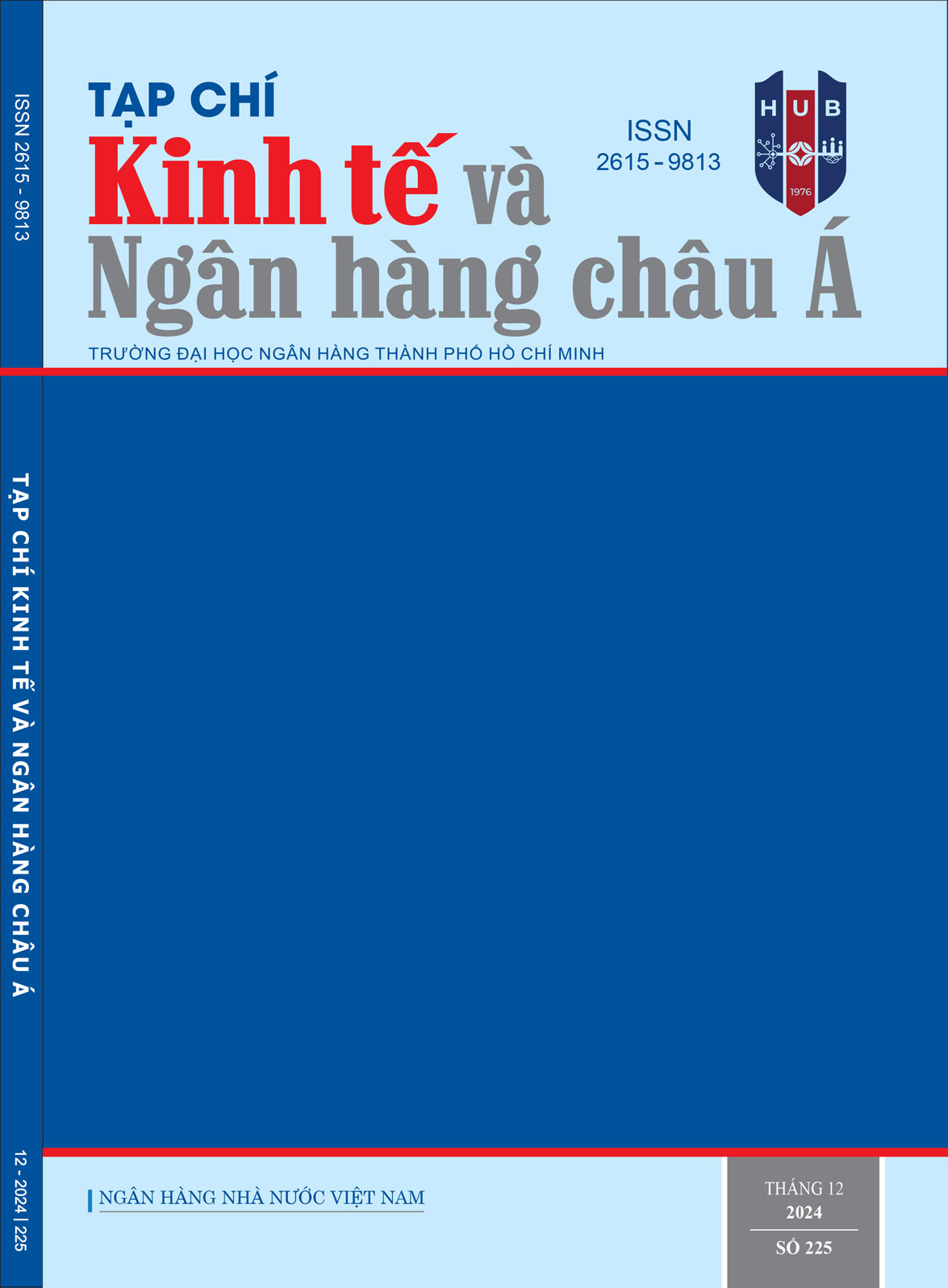| ISSN | 2615-9813 |
| ISSN (số cũ) | 1859-3682 |
SỐ 180 | THÁNG 3/2021
Khảo sát tính bền trong chuỗi thời gian của đồng tiền số bitcoin – Tiếp cận bằng chuỗi liên kết hữu tỷ
Trần Thị Tuấn Anh
Tóm tắt:
Bài viết sử dụng chuỗi giá và tỷ suất sinh lợi (TSSL) theo ngày và theo tuần của đồng tiền số bitcoin trong giai đoạn 01/2012–9/2020 để khảo sát tính bền trong các chuỗi thời gian của thị trường bitcoin. Bậc liên kết hữu tỷ được tính toán trên toàn bộ mẫu dữ liệu và trên từng giai đoạn theo điểm gãy cấu trúc của chuỗi giá bitcoin. Kết quả kiểm định cho thấy, chuỗi giá bitcoin theo ngày và theo tuần đều là chuỗi không dừng và tính bền theo thời gian rất cao, đặc biệt trong giai đoạn sau điểm gãy cấu trúc. Trong khi đó, chuỗi TSSL theo ngày luôn là chuỗi dừng và tính bền theo thời gian của chuỗi khá yếu. Bài viết này xác định tính bền trong các chuỗi thời gian về bitcoin trong giai đoạn dịch Covid-19 diễn ra toàn cầu và cho thấy, tính bền của chuỗi giá và TSSL trong giai đoạn này không khác biệt với giai đoạn sau điểm gãy cấu trúc. Tác động của Covid-19 lên tính bền của chuỗi bitcoin không có những biểu hiện rõ ràng trong cách tiếp cận bằng chuỗi liên kết hữu tỷ.
Tài liệu tham khảo:
- Abbritti, M., Gil-Alana, L. A., Lovcha, Y., & Moreno, A. (2016). Term structure persistence. Journal of Financial Econometrics, 14(2), 331-352.
- Backus, D., & Zin, S. (1993). Long memory inflation uncertainty. Evidence from the term structure of interest rates. Journal of Money, Credit, and Banking, 25, 681-700.
- Caporale, G. M., & Gil-Alana, L. (2002). Unemployment and Input Prices: A Fractional Cointegration Approach. Applied Economics Letters, 9(6), 347–351.
- Caporale, G. M., Gil-Alana, L. A., Plastun, A., & Makarenko, I. (2016). Long memory in the Ukrainian stock market and financial crises. J. Econ. Finance 40 (2), 235-257.
- Caporale, G. M., Gil-Alana, L., & Plastun, A. (2018). Persistence in the Cryptocurrency Market. Research in International Business and Finance, 46, 141-148.
- Couchman, J., Gounder, R., & Su, J. J. (2006). Long memory properties of real interest rates for 16 countries. Applied Financial Economics Letters, 2, 25-30
- Dickey, D. A., & Fuller, W. A. (1979). Distribution of the Estimators for Autoregressive Time Series with a Unit Root. Journal of the American Statistical Association. 74 (366): 427–431
- Elder, J., & Serletis, A. (2007). On fractional integrating dynamics in the US stock market, Chaos. Solitons & Fractals, 34(3), 777-781.
- Escobar, M., Ferrando, S., & Rubtson, A. (2016). Portfolio choice with stochastic interest rates and learning about stock returns predictability. International Review of Economics & Finance, 41, 347-370.
- Garbers, C., & Liu, G. (2018). Macroprudential policy and foreign interest rate shocks. A comparison of loan-to-value and capital requirements. International Review of Economics & Finance, 58, 683-698.
- Gil-Alana, L. A., & Moreno, A. (2012). Uncovering the US term premium. An alternative route. Journal of Banking & Finance, 36(4), 1181-1193.
- Greene, M. T. & Fielitz, B. D. (1977). Long-term dependence in common stock returns. Journal of Financial Economics, 5, 339-349.
- Hacker, R. S., Karlsson, H. K., & Månsson, K. (2014). An investigation of the causal relations between exchange rates and interest rate differentials using wavelets. International Review of Economics & Finance, 29(C), 321-329
- Hansen, B. E. (1997). Approximate asymptotic p values for structural-change tests. Journal of Business and Economic Statistics, 15, 60-67.
- Article citationsMore>>
- Kwiatkowski, D., Phillips, P.C.B., Schmidt, P. and Shin, Y. (1992) Testing the Null Hypothesis of Stationarity against the Alternative of a Unit Root. Journal of Econometrics, 54, 159-178.
- Lai, K. S. (1997). Long term persistence in real interest rate. Some evidence of a fractional unit root. International Journal of Finance & Economics, 2, 225-235.
- Lo, A. W. (1991). Long-term memory in stock market prices, Econometrica, 59, 1279-1313.
- Phillips, P.C.B. (1998). Econometric analysis of Fisher’s equation. Yale University, Cowles Foundation Discussion Paper 1180.
- Phillips, P. C. & Shimotsu, K. (2005). Exact local Whittle estimation of fractional integration. Ann. Stat. 33, 1890-1933.
- Probst, J. (2019). Global real interest rate dynamics from the late 19th century to today. International Review of Economics & Finance, 59, 522-547.
- Robinson, P. M. (1994). Efficient tests of nonstationary hypotheses. Journal of the American Statistical Association, 89, 1420-1437.
- Serletis. A, & Shintani, M. (2003) No evidence of chaos but some evidence of dependence in the US stock market. Chaos, Solitons & Fractals, 17, 449-54.
- Yaya, O. S., Ogbonna, A. E., Mudida, R., & Abu, N. (2020). Market efficiency and volatility persistence of cryptocurrency during pre‐ and post‐crash periods of Bitcoin: Evidence based on fractional integration. International Journal of Finance & Economics, 1-18.
Investigating the Persistence of Bitcoin’s Time Series – A Fractional Integration Approach
Abstract:
The article uses the daily and close prices and returns of bitcoin from January 2012 to September 2020 to investigate the persistence in bitcoin’s time series. The fractional integration is computed for the entire data sample and for each period before and after the structural break. The results show that bitcoin price series are nonstationary and highly persistent overtime, especially during the period after the tructural break. In contrast, the daily bitcoin return series is stationary and its persistence over time is quite weak. The article also identifies bitcoin's persistence during the global Covid-19 outbreak and shows that the persistence of bitcoin price and return series are similar to that of post-break period. The impact of Covid-19 on bitcoin market is not clearly evident in the fractional integration approach.








